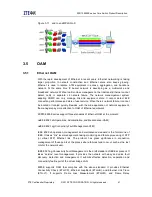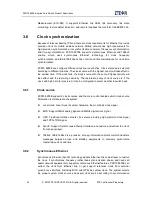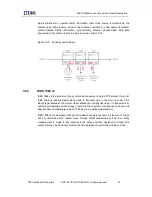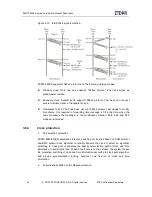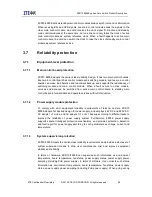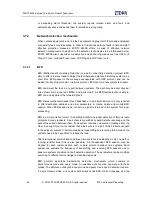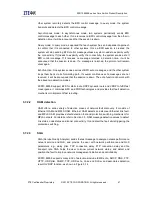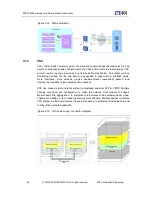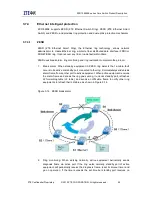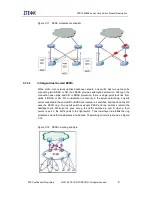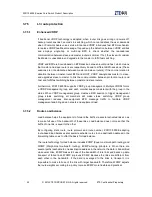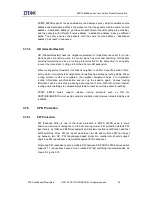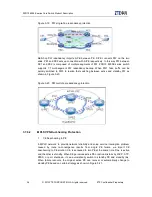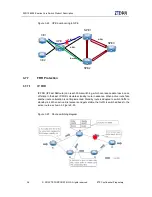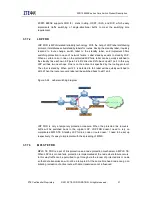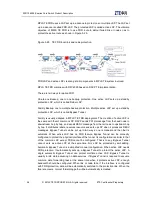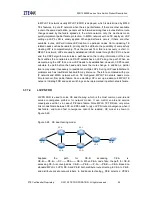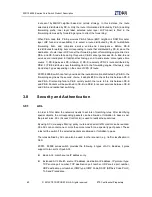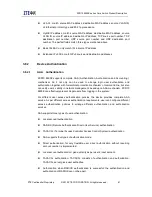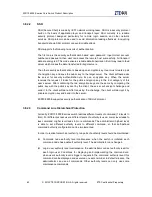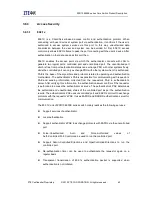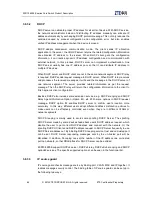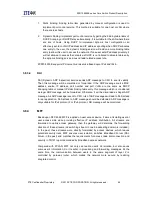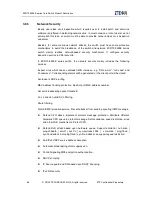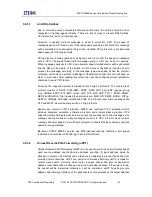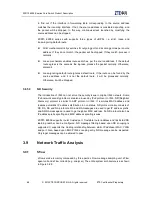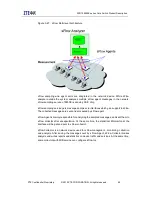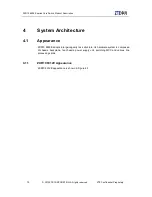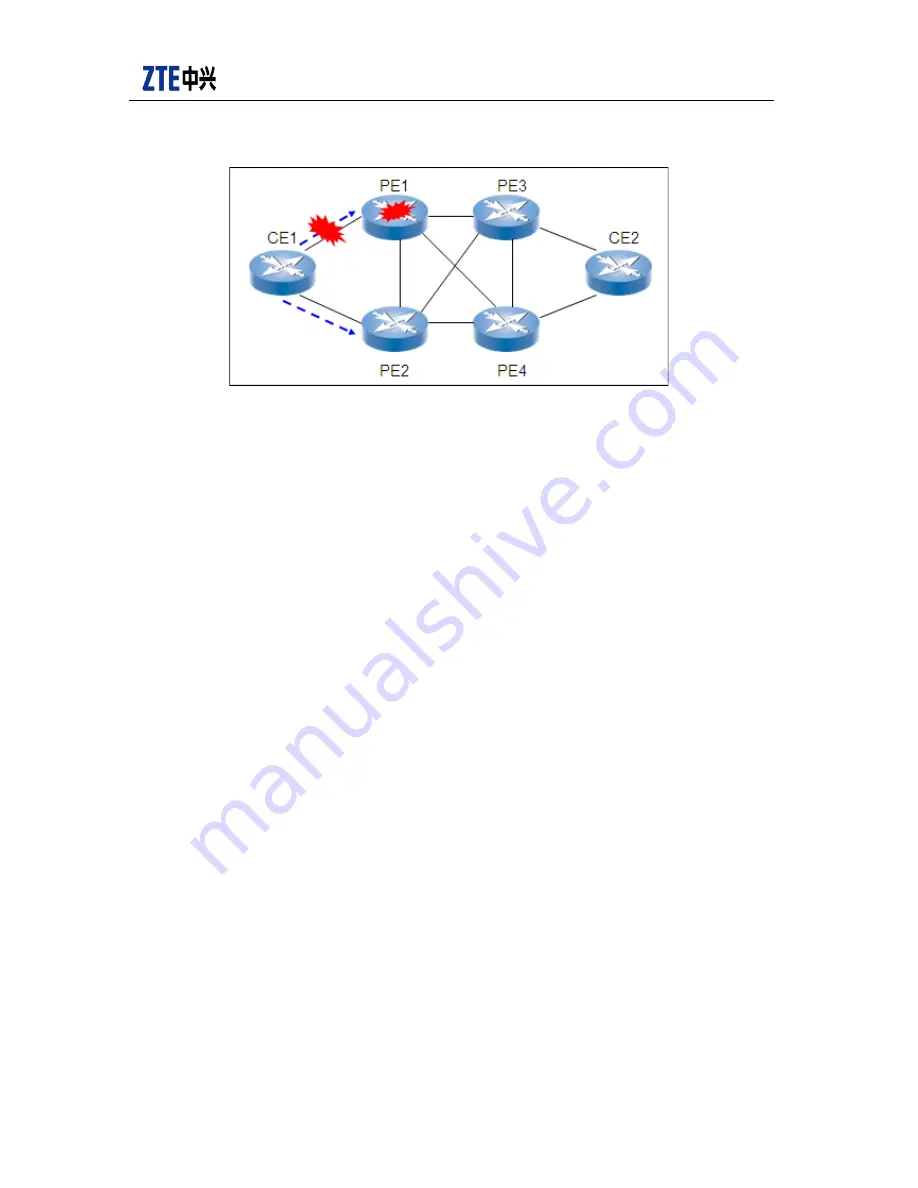
ZXR10 8900E series Core Switch Product Description
ZTE Confidential Proprietary
© 2013 ZTE CORPORATION. All rights reserved.
55
Figure 3-21 CE dual-homing to PE
L3VPN adopts FRR to set active/standby forwarding item directing active PE1 and
standby PE2 at remote PE. PE implements quick failure detection by BFD and MPLS
OAM. When PE4 detects PE1 failure, it can forward traffic to PE2. Service traffic between
CE1 and CE2 can be switched to PE2-PE4 link.
In L2VPN PE4 save PE1 and PE2 forwarding table at the same time. That is to say, MAC
active egress for CE1 is PE1 and standby egress is PE2. PE4 forwarding item will set
forwarding prefix, inner layer label, and selected outer layer LSP tunnel. When PE1 fails
(for example, unavailable tunnel is perceived by BFD and MPLS OAM), PE4 can forward
traffic to PE2. When CE1-PE1 link fails, PE1 will notify PE4 to refresh MAC address,
change the egress, and switch the traffic to PE2-PE4 link.
2.
UPE Dual-homing to NPE
In H-VPLS network, there’s also single-point failure. Dual-homing of UPE to NPE can
improve network reliability and avoid link and NPE single-point failure. When a link fails,
for example, BFD detection or port shutdown, traffic can be switched to standby link.
When the failure is recovered, the original active NPE will recover or automatically
become standby NPE based on certain strategy as shown in Figure 3-22.
In H-VPLS with U-PW access, LDP session is run between UPE and NPE. Whether the
active PW fails can be decided based on LDP session state. In H-VPLS with QinQ
access, STP can be run between UPE and the NPE connected to it to ensure that the
other link is activated when one link fails.
Содержание ZXR10 8900E series
Страница 1: ...Operator Logo ZXR10 8900E series Core Switch Product Description ...
Страница 2: ......
Страница 10: ......

